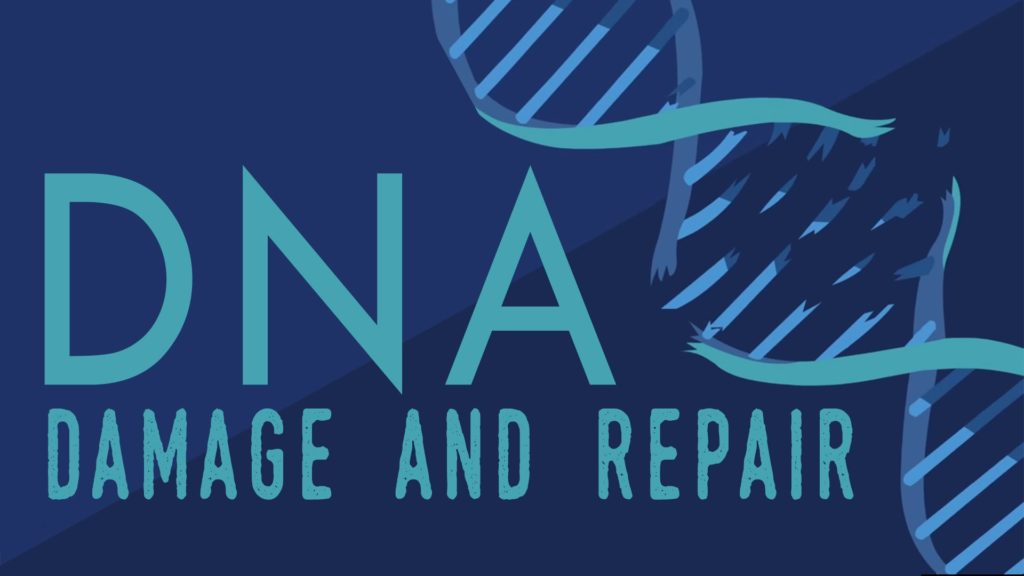What happens when your DNA is damaged?

The DNA in just one of your cells gets damaged tens of thousands of times per day. Multiply that by your body’s hundred trillion or so cells, and you’ve got a quintillion DNA errors everyday. And because DNA provides the blueprint for the proteins your cells need to function, damage causes serious problems, such as cancer. The errors come in different forms. Sometimes nucleotides, DNA’s building blocks, get damaged, other times nucleotides get matched up incorrectly, causing mutations, and nicks in one or both strands can interfere with DNA replication, or even cause sections of DNA to get mixed up.
Fortunately, your cells have ways of fixing most of these problems most of the time. These repair pathways all rely on specialized enzymes. Different ones respond to different types of damage. One common error is base mismatches. Each nucleotide contains a base, and during DNA replication, the enzyme DNA polymerase is supposed to bring in the right partner to pair with every base on each template strand. Adenine with thymine, and guanine with cytosine. But about once every hundred thousand additions, it makes a mistake. The enzyme catches most of these right away, and cuts off a few nucleotides and replaces them with the correct ones. And just in case it missed a few, a second set of proteins comes behind it to check.
If they find a mismatch, they cut out the incorrect nucleotide and replace it. This is called mismatch repair. Together, these two systems reduce the number of base mismatch errors to about one in one billion. But DNA can get damaged after replication, too. Lots of different molecules can cause chemical changes to nucleotides. Some of these come from environmental exposure, like certain compounds in tobacco smoke. But others are molecules that are found in cells naturally, like hydrogen peroxide. Certain chemical changes are so common that they have specific enzymes assigned to reverse the damage.
But the cell also has more general repair pathways. If just one base is damaged, it can usually be fixed by a process called base excision repair. One enzyme snips out the damaged base, and other enzymes come in to trim around the site and replace the nucleotides. UV light can cause damage that’s a little harder to fix. Sometimes, it causes two adjacent nucleotides to stick together, distorting the DNA’s double helix shape. Damage like this requires a more complex process called nucleotide excision repair. A team of proteins removes a long strand of 24 or so nucleotides, and replaces them with fresh ones.
Very high frequency radiation, like gamma rays and x-rays, cause a different kind of damage. They can actually sever one or both strands of the DNA backbone. Double strand breaks are the most dangerous. Even one can cause cell death. The two most common pathways for repairing double strand breaks are called homologous recombination and non-homologous end joining. Homologous recombination uses an undamaged section of similar DNA as a template.
Enzymes interlace the damaged and undamgaed strands, get them to exchange sequences of nucleotides, and finally fill in the missing gaps to end up with two complete double-stranded segments. Non-homologous end joining, on the other hand, doesn’t rely on a template. Instead, a series of proteins trims off a few nucleotides and then fuses the broken ends back together. This process isn’t as accurate.
It can cause genes to get mixed up, or moved around. But it’s useful when sister DNA isn’t available. Of course, changes to DNA aren’t always bad. Beneficial mutations can allow a species to evolve. But most of the time, we want DNA to stay the same. Defects in DNA repair are associated with premature aging and many kinds of cancer. So if you’re looking for a fountain of youth, it’s already operating in your cells, billions and billions of times a day.






Responses